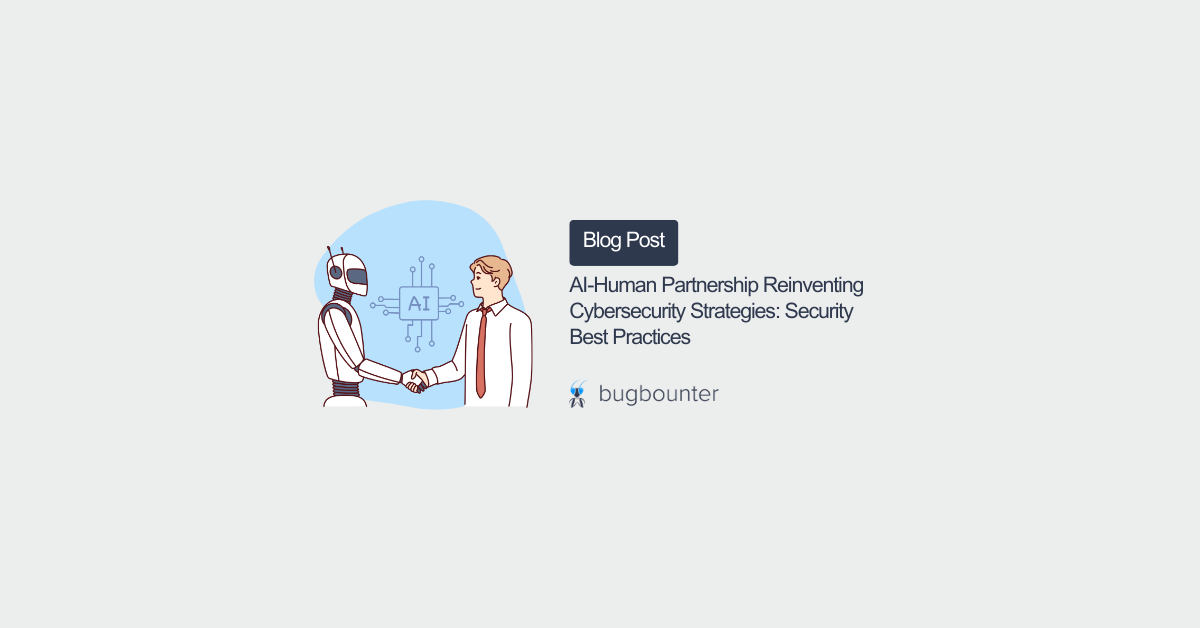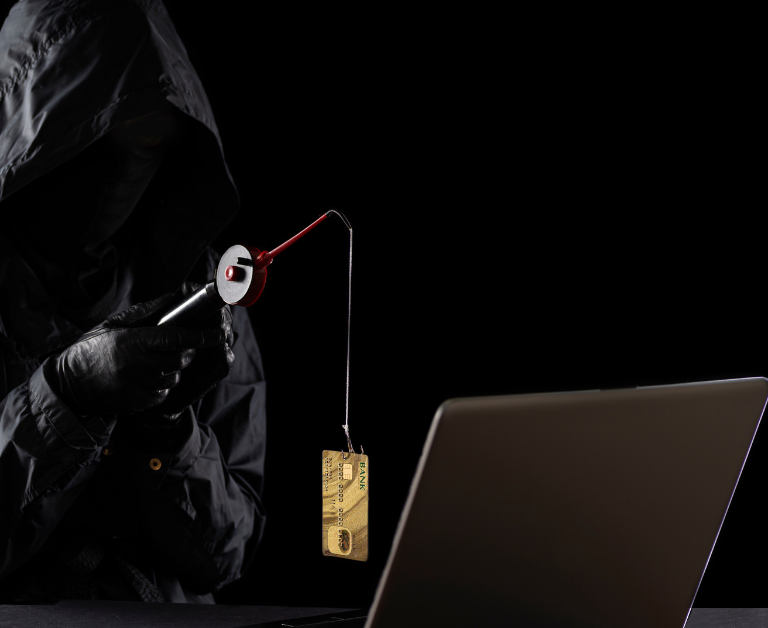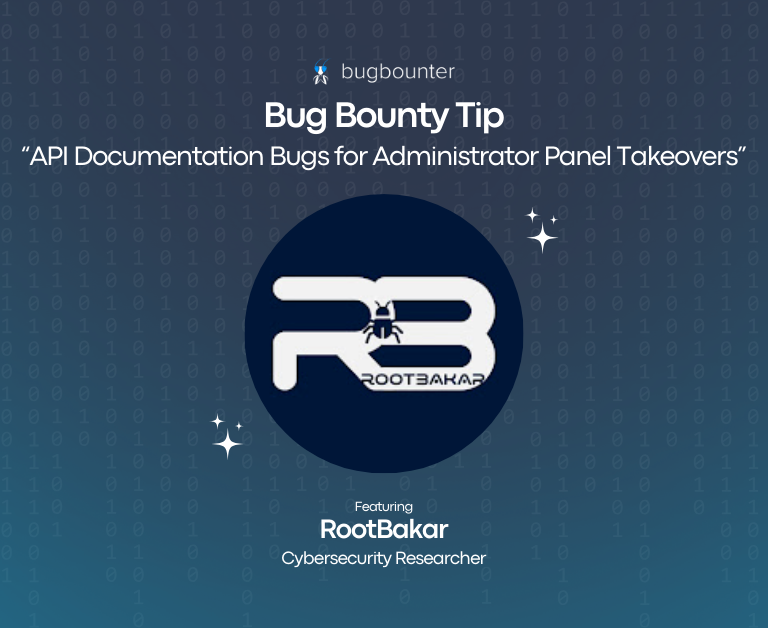AI-Human Partnership Reinventing Cybersecurity Strategies: Security Best Practices
In the ever-evolving realm of cybersecurity, where threats are as dynamic as the technologies they target, an effective defense strategy is paramount. The integration of Artificial Intelligence (AI) into cybersecurity has emerged as a game-changer, revolutionizing the battle against cyber threats. This blog post explores how the partnership between AI and human expertise, coupled with bug bounty programs, is reshaping cybersecurity strategies and security best practices.
Talk to a real person instead of reading.
The Evolution: AI in Cybersecurity
Artificial Intelligence, often referred to as AI, has transformed from an emerging technology to a cornerstone in cybersecurity. With the ability to process vast amounts of data and learn from patterns, AI has become a crucial tool for rapid threat detection and mitigation. The synergy between AI and human intelligence, combined with bug bounty programs, is not just a trend; it’s a necessity in the face of increasingly sophisticated cyber threats.
AI-Powered Malware: A New Frontier in Attacks
As AI has bolstered cybersecurity defenses, it has simultaneously given rise to a new breed of cyber threats. Attackers now exploit AI capabilities to execute more precise and efficient attacks. Machine learning algorithms, initially designed to assist in automating routine security tasks, can now be trained to find and exploit software vulnerabilities. This evolution has expanded the arsenal of attackers, making intrusion detection evasion and AI-powered phishing attacks more sophisticated challenges.
Example: AI-Driven Web Scraping Attacks
A concrete example of this shift is the utilization of AI-powered bots for web scraping attacks. These intelligent agents bring unprecedented advantages to cybercriminals. They autonomously navigate complex website structures, adapting swiftly to changes. Their ability to mimic human behavior grants them invisibility within legitimate traffic. The result? Cybercriminals can execute scraping operations on a massive scale, extracting voluminous data at speeds impossible through traditional methods.
Arms Race and Autonomous Hacking Systems
The integration of AI into cybersecurity has initiated an arms race, with autonomous hacking systems becoming powerful weapons in this ongoing battle. These systems can autonomously identify targets, exploit vulnerabilities, and adapt strategies based on the target’s response. However, ethical concerns loom large, as the potential for misuse by governments, criminal organizations, and hacktivists raises the need for robust defensive strategies and international regulations.
AI in Cyber Defense: Strengthening the Fortress
Despite its role in empowering attackers, AI plays a pivotal role in defensive strategies. Machine learning algorithms analyze vast datasets to predict emerging threats and enable organizations to strengthen their defenses proactively. Anomaly detection systems powered by AI identify unusual patterns, triggering rapid response. Automated analysis of attack patterns assists security teams in understanding the source and taking countermeasures.
Enhancing Threat Hunting with AI
Traditional security techniques, though effective against known threats, may fall short against unknown threats. Combining traditional methods with AI boosts detection rates, minimizing false positives. AI’s behavioral analysis capabilities allow organizations to develop comprehensive profiles of applications within their networks, offering an enhanced approach to threat hunting.
Bug Bounty Programs: Crowdsourcing Security
In the pursuit of fortifying cybersecurity, bug bounty programs play a pivotal role. These programs invite cybersecurity experts worldwide to identify vulnerabilities in an organization’s systems, applications, or networks. By incentivizing the discovery of security flaws, bug bounty programs provide an additional layer of defense against potential threats. AI can complement these programs by analyzing the reported vulnerabilities and helping prioritize the most critical issues for immediate attention.
AI in Vulnerability Management: A Proactive Approach
The challenge of prioritizing and managing vulnerabilities is addressed by complementing traditional methods with advanced techniques like User and Event Behavioral Analytics (UEBA). AI and machine learning proactively detect anomalous behavior, indicating potential zero-day unknown attacks. Implementing these measures enhances an organization’s ability to protect itself even before vulnerabilities are officially reported and patched.
Ethical and Legal Quandaries
The integration of AI into cybersecurity introduces ethical and legal challenges. The use of AI in autonomous hacking systems questions traditional concepts of human responsibility in cyberattacks. New legal frameworks and attribution methods are essential for identifying responsible parties. Ethical concerns arise from AI’s offensive use, emphasizing the need for international agreements to establish norms for the ethical use of AI in cyber warfare.
The Human Touch: Collaboration is Key
In this era of AI-driven cybersecurity, human analysts remain fundamental. While AI processes data and identifies patterns, human intuition and expertise are necessary for contextual understanding and decision-making. The partnership between AI, human analysts, and bug bounty programs creates a symbiotic relationship where AI accelerates data processing and threat identification, cybersecurity experts contribute to vulnerability discovery, while humans provide critical thinking and strategic insights.
Conclusion: Navigating the Future of AI in Cybersecurity
The evolution of AI in cybersecurity is an ongoing journey, with immense potential and significant challenges. As we navigate this path, it is crucial to anticipate and address ethical and legal challenges, ensuring the responsible use of AI while maximizing its potential. The partnership between AI, human intelligence, and bug bounty programs is the linchpin that will continue to redefine cybersecurity strategies and security best practices in the digital age. Embrace this holistic approach for a safer digital world.





